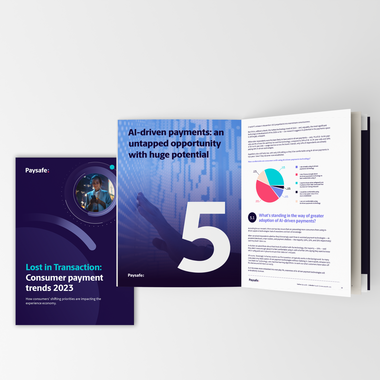
- Three minutes read
How are consumers spending on subscription services?
With consumers changing the way they spend their disposable income, what does this mean for subscription services?
The growth of subscription services – in particular entertainment streaming – has been well-documented. As shelf space is freed up by dwindling Blu-Ray and CD collections, consumer spending on monthly subscriptions like Netflix, Amazon Prime and Spotify has grown.
But spending habits are changing due to economic disruption, so will consumers continue to spend their hard-earned money on subscription services, and how highly are these services valued? And what are the payment trends that subscription services and entertainment streaming companies should be aware of?
Our recent Lost in Transaction: The Disposable Income Report surveyed 14,525 consumers across the UK, the Americas, and Europe about their discretionary spending habits – here’s what we learned.
Budgets are tightening, but subscription services remain a priority
While there are many different types of subscription service, it’s no surprise that entertainment streaming reigns supreme. This is reflected in our report – when asked what types of subscription services consumers are signed up to, film and TV streaming services (57%) and music streaming services (38%) were the most popular choices.
And while entertainment streaming may be suffering certain challenges – from greater competition, to the continued fight to secure the best content – the future remains bright. According to research, the global video streaming market size is expected to reach USD 416.84 billion by 2030.
As for other services, consumers are spending on everything from food and meal delivery (19%), videogame subscriptions (18%), and software subscriptions (16%). In fact, only 17% of consumers say they don’t have any current subscriptions.
But how are consumers paying for these subscriptions, and how can services better cater to them?
How are consumers managing subscription services?
Unlike one-off purchases, subscription services can be easy to lose track of, and the effort of managing their payment can feel like a burden.
In fact, when asked how they pay or manage their entertainment streaming services, only 20% of consumers who have subscriptions regularly review and turn them on and off, based on current needs.
Additionally, 9% of consumers often sign up for promotions and consider cancelling once the price rises, and 4% only use freemium (where basic models are free but more advanced offerings are paid for) subscriptions. It seems that, discount or not, subscriptions are deemed necessary outlays for consumers.
As for the types of service we expect to see grow, video game streaming arguably ranks highest. While only 5% of consumers currently choose video game subscriptions as their most valued subscription service, this is an evolving industry, with streaming set to become a greater part of the way players enjoy the latest releases. And payments can play a part in nurturing this growth.
Providing better subscription payments
With more consumers turning to these services, it’s vital that subscription businesses and entertainment companies with streaming platforms offer a payment experience that delivers speed, security, and convenience in equal measure, making it easier than ever for consumers to kick-start, manage, or renew their subscriptions. So how can they do this?
Offering local payment methods (LPMs) like digital wallets and eCash can be a huge boon – delivering swift, secure, and friction-free payment experiences. For example, neither of these LPMs require consumers to share sensitive financial details, tackling security concerns they may have.
For gamers, digital wallets are especially appealing – our research found that 63% of respondents who make online gaming purchases think digital wallets are the most convenient way to pay.
As for eCash, this allows consumers to pay with cash online, using either prepaid (paysafecard, for example) or postpaid (Paysafecash) payment methods – empowering subscription services to reach a broader customer segment. And with paysafecard’s new one-click and recurring payments feature, customers can pay for subscriptions with cash, at the touch of a button, without ever leaving the checkout.
For subscription services, the ability to deliver a fast, efficient, and secure payment experience, regardless of how consumers want to pay, will be essential to thrive in 2024 and beyond.
Want to learn more about consumer payment trends for everything from charitable giving to experiential spending? Check out our Lost in Transaction: The Disposable Income Report.




